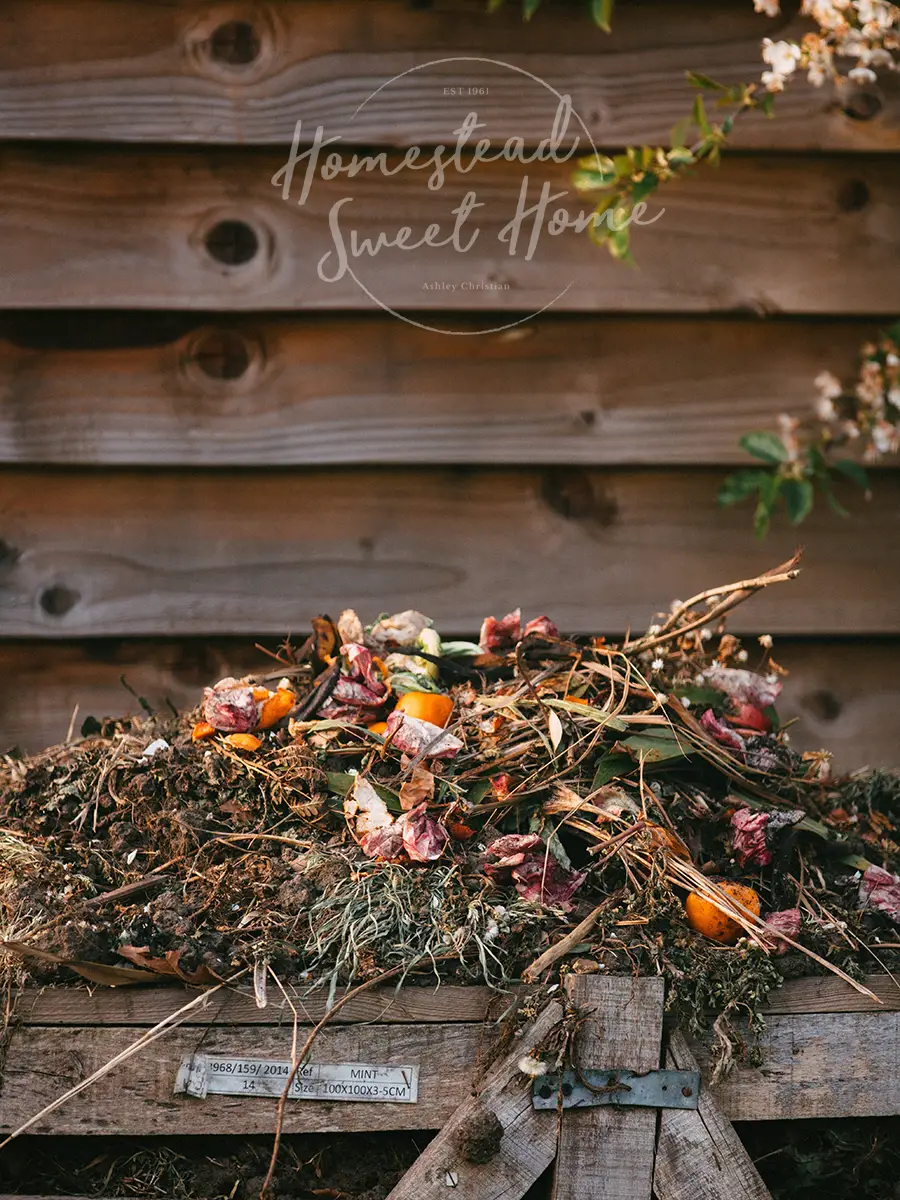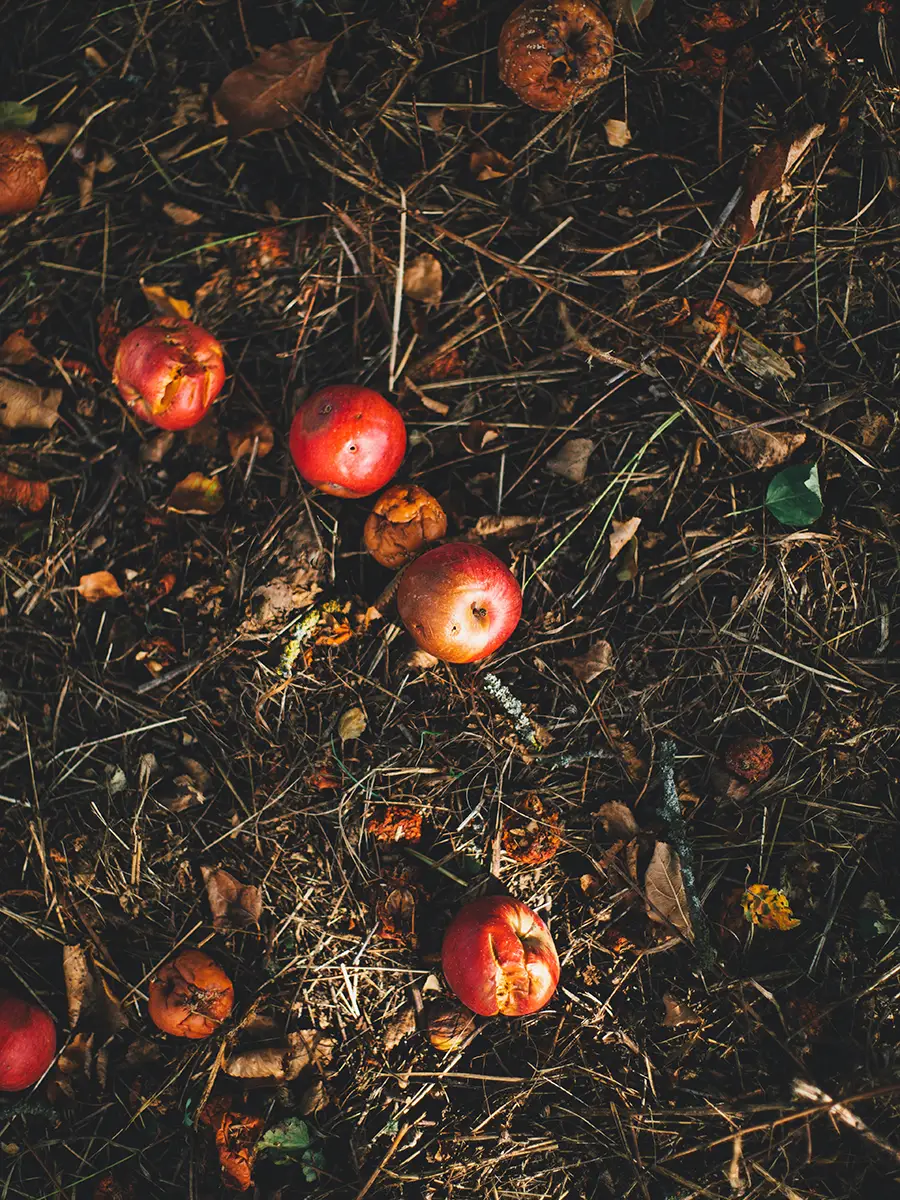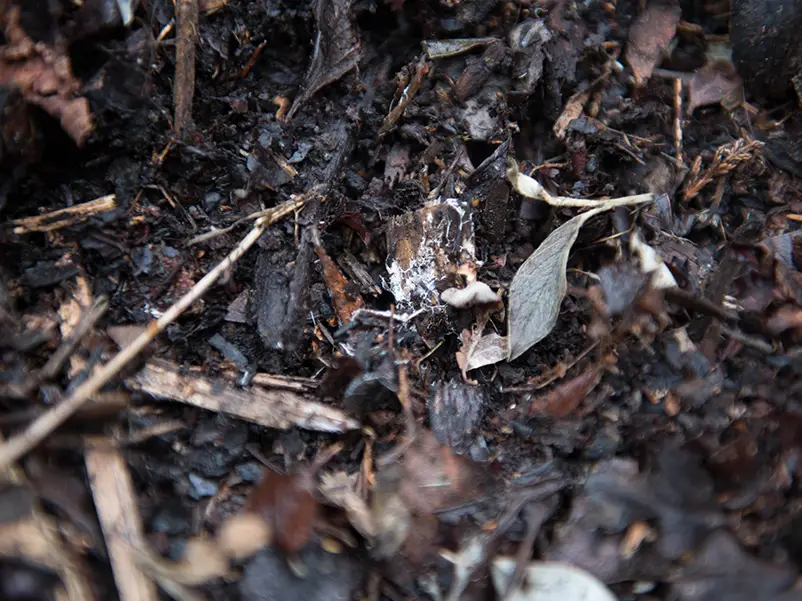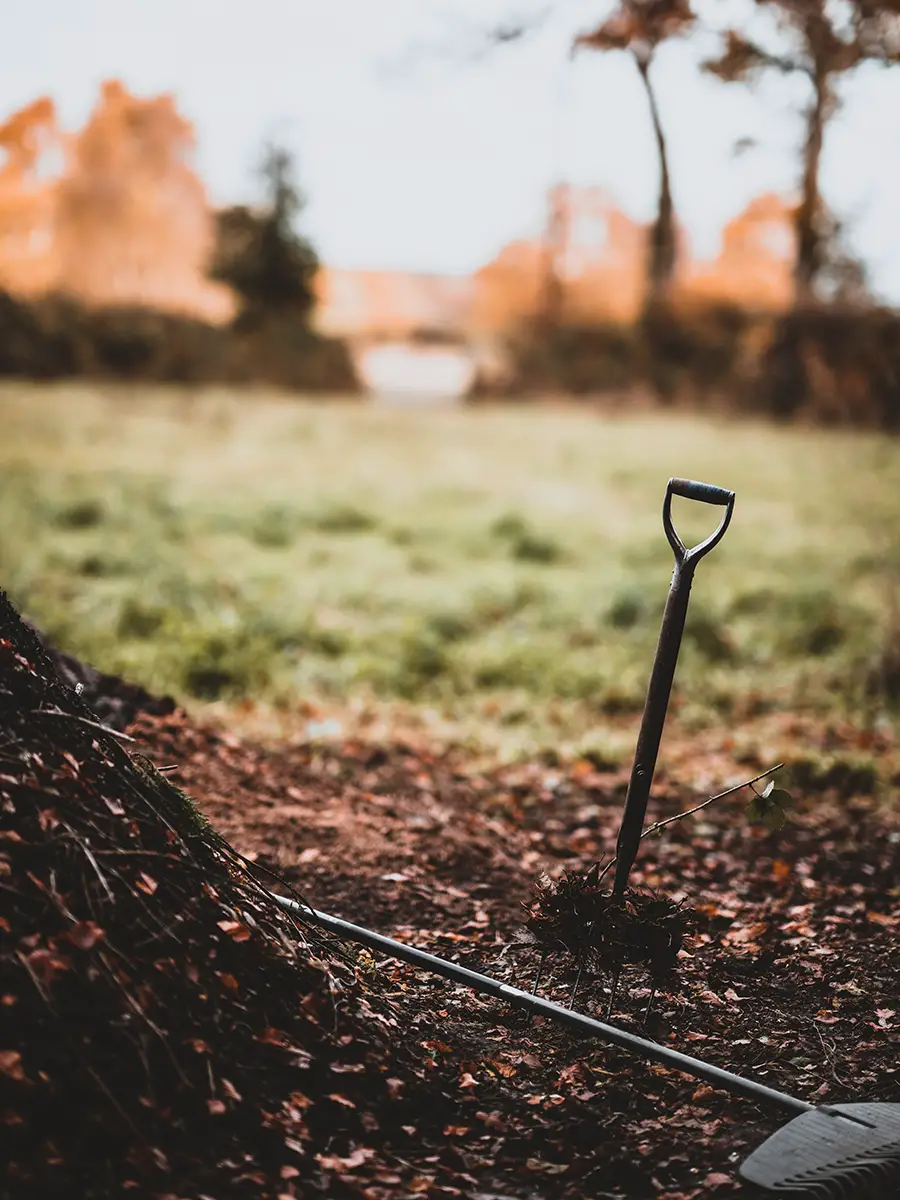Compost Pile vs Bin – Which Works Best + Hot Compost Recipe

If you are planning to create a compost pile on your property to nourish your garden and repurpose lawn and kitchen scraps, you will love the results. There is nothing quite like fresh compost in the garden to produce the most incredible vegetables and flowers. You may be wondering which is better—compost pile vs bin.
There are pros and cons in the compost pile vs bin debate. Both can give you great results, but picking the right method will depend on your needs and your situation. We’ll lay out the pros and cons, and guide you through how to start, care for, and use your compost from your pile or bin.
Making compost is a traditional organic method of taking natural brown and green materials, and transforming them into nitrogen and carbon-rich compost. This organic matter slowly breaks down into ultra-rich soil with time, heat, and moisture.
Making your own compost is one of the best things you can do for your garden, and will save you money from buying it in bags at the nursery or hardware store. It will also help you do something productive with your kitchen and garden scraps, and lawn waste like leaves, grass clippings, and pine needles. After reading through the great compost pile vs. bin debate, you will feel confident choosing the right solution for your home and garden.
When to Use a Compost Pile
Compost Pile Pros
- Gives you a larger quantity of finished compost
- Can be used with chickens
- You can compost in place of a future garden site
- Cost-free
Compost Pile Cons
- Can be an eye-sore
- Sometimes compost piles are not allowed by neighborhood or city rules
- A slower process if cold-composting
- More labor-intensive if hot-composting
- Can attract rodents
Before you consider using a compost pile, understand that they can be an eyesore and in some places are not allowed by neighborhood rules or city ordinance. If you are in this camp, you’ll want to use a compost bin that will hide the mess and still give you the compost results you’re looking for.
A compost pile is the most traditional way of creating compost and is very helpful if you have a large property and a large number of raw materials to compost. They naturally won’t all fit in a bin, and therefore a pile will be the best solution for you. Many gardeners also like to compost in place for future use. My grandfather will let ¼ of his garden rest and compost every year, so he throws all his kitchen and lawn scraps right in that section of the garden to work its magic.
If you own chickens, they make some of the best natural composters you can find. Their pecking and scratching behaviors, along with nitrogen-rich chicken poop, will make quick work of your compost pile. Gardeners who let their chickens free-range over their compost find they don’t need to turn it, it will compost down much more quickly, and it cuts down on their feed costs. The compost pile, chickens, and garden can create their own mini-ecosystem for each other. You obviously can’t do this if you have a compost bin.
Another advantage of a compost pile is that it costs no money to start. You are literally taking trash and making it into organic gardening treasure. All you need to do is simply start a pile. The disadvantage of this is that it can look messy and take up a lot more space than a compost bin. You may also find your pile growing and spreading out much bigger than you originally intended it.
Another disadvantage of a compost pile vs bin is that it can attract rodents and other varments you don’t want around. You can mitigate some of these problems by creating a barrier around your compost pile made of upcycled pallet wood, hay bales, or directly into your garden area or raised beds.

When to Use a Compost Bin
Where there is space, a compost pile is usually preferred, but if you are short on space, or need a quick and easy way to compost, a compost bin may be the way to go. The truth is there is no one right answer for everyone when considering a compost pile vs bin. You really can’t go wrong either way and sometimes the only way to find out what works best for you is to try them both.
Compost Bin Pros
- Tidy appearance
- Perfect for small spaces
- Easily create hot compost with insulated, rotating bins
- Can be used as a worm composter
Compost Bin Cons
- Does not produce large quantities of compost
- You need to purchase the compost bin, or purchase materials to make it
- Can become waterlogged and smell bad
- Enclosed systems are not good for cold composting and need to be turned frequently
A compost bin is perfect if you have a small space and you don’t want to see your compost working its magic. Because compost bins are small and more easily contained, you can have more control over your compost. It’s also easier to leave them close to your house, or in some cases even in your kitchen. For some people, the compost bin just feels more manageable.
The problem with the compost bin is it won’t be enough if you have a large garden you want compost for. Or if you have a large number of lawn clippings you want to compost, they won’t fit in the compost bin. If you want to compost in the place you plan to plant your garden, you can’t do this well with a compost bin either.
Instead of making it a compost pile vs bin decision, many gardeners actually keep both, so they have the best of both worlds. They use the compost bin near the kitchen for their scraps, while keeping a larger pile for their lawn clippings, leaves, and pine needles.
Some compost bins are really just mini compost piles but in a container of some sort. My grandfather keeps a metal compost container by the kitchen sink for all the kitchen scraps. Once a week he carries it out to the garden to add to the resting soil and compost in place.
There are two other types of composting bins you’ll want to learn about, the tumbler and the worm farm. Both have their distinct advantages.

Compost Tumbler
A compost tumbler is a container that can be turned, usually with a crank handle. You can make your own or buy one. Turning the compost tumbler takes the place of aerating a compost pile by turning it and adding oxygen to your compost which helps it break down faster.
Compost tumblers come in a wide variety of designs, and usually the larger they are, the better they work, and the more expensive they are. Even though compost tumblers are marketed to compost faster than a traditional bin, many real-life tests have found that they can take a whole extra month to compost which puts it at a great disadvantage in the compost pile vs bin debate.
In general, you can expect a compost tumbler to take about three months to compost green and brown materials. On one hand, this is much faster than the 1 to 2 years of cold compositing in a pile but much more than the 18 days of a well-managed hot compost pile. You can read below our recipe for a hot compost pile.
Your compost pile vs bin or even tumbler should be in a shady spot in hot weather, and a sunny spot in cold weather. If you live in an area with heavy rainfall, keep your compost in a covered area to keep it from becoming waterlogged and stinking.
Vermicompost (Worm Farm)
Vermicomposting, or creating a worm farm, is a wonderful addition to your garden ecosystem. It’s a lot of fun, especially for kids, and can even be maintained indoors if you’d like. You can buy a worm bin, but one can be made simply with two plastic bins, and a few extra materials. You can buy red wiggler worms online, get some from another gardener, or order some from your USDA local extension office.
Though they don’t produce large quantities of compost, worms are very low-maintenance housemates. They also create incredibly rich garden compost that can be added to your most delicate, or most deserving plants. The soil the worms make is called worm castings, and many gardens buy it in bags to amend their garden soil. Even better if you can add nontoxic waste to the bin and come up with garden gold.
Hot vs Cold Compost
No discussion on using a compost pile vs bin would be complete without understanding the difference between a hot and cold compost pile.
A cold compost pile is simply added to as often as you have organic materials and composts slowly in place. This is a slow process that typically takes one to two years for the organic materials to completely compost. The finished result is about 20% less volume than what you started with, and also contains larger particles from the original material. Even though it’s slow, the good thing about cold composting is that it is hassle-free. You simply throw it in the pile and forget about it.
A hot compost pile is a bit more high maintenance but can result in rich, fine compost in as little as 18 days. A hot compost pile is typically done in a compost tumbler, or a pile that is at least three feet in diameter, and between 3 to 5 feet high. Hot compost uses a mix of 2/3rds carbon-rich brown materials like leaves, hay, bark, and sawdust, and 1/3rd nitrogen-rich green materials like fresh grass clippings, animal manure, or kitchen scraps.
This 3:1 mix of brown and green materials gives you a balance of carbons and nitrogens that when mixed with some moisture and air, allows composting bacteria to thrive, heat up the pile, and break down the materials into rich soil that has fine particles and no trace or shape of the original materials.
The benefits of a hot compost pile, are that it can create perfect compost in less than three weeks, and it also kills weed seed and diseases on plants that could affect your garden and are not destroyed by cold composting. Here is our recipe for hot composting:
Hot Compost Recipe
2 parts carbon-rich brown materials
- Leaves
- Pine needles
- Hay
- Wood chips
- Shredded cardboard or paper
- Sawdust
1 part nitrogen-rich green materials
- Fresh lawn clippings
- Kitchen scraps
- Animal or chicken manure
- Fish remains
Instructions:
- Pile the 2:1 ratio of brown to green materials in a heap that is three feet wide, three feet long, and three to five feet tall.
- Wet the materials so they are dripping but not saturated
- Let the pile sit until the 5th day, then turn with a pitchfork every other day
- Use a compost or cake thermometer to measure the temperature of your pile, it should be between 131-149 degrees F, temperature peaks on days 6-8, and gradually cools after
- If your pile is too hot, there is too much nitrogen, so you can add a handful of sawdust each time you turn the pile
- If your pile isn’t heating up fast enough, add a handful of bone or blood fertilizer each time you turn the pile
- If you are making hot compost in cold or wet weather, cover the pile with a tarp in between turnings
- If you are making hot compost in hot or dry weather, you may need to lightly water your pile to retain some moisture, the pile should lightly drip, but not be saturated
Summary
In the compost pile vs bin debate, there is no one right answer for every situation. Most people have adequate garden space like a contained compost pile. While most gardeners in small spaces prefer the compost bin or tumbler. Many gardeners even have both.
If you’re ready to start a garden, composting is the best place to start. Check out our Complete Guide to Gardening at Home + 5 Beginner Mistakes to Avoid.
What about you, have you composted before? What has worked well for you? Let us know in the comments.


Leave a Reply